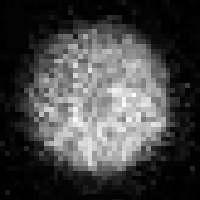1 Ceres
|
|
| Discovery A (http://cfa-www.harvard.edu/iau/lists/NumberedMPs.html) | |
|---|---|
| Discoverer | Giuseppe Piazzi |
| Discovery date | January 1, 1801 |
| Alternate designations | A899 OF; 1943 XB B (http://cfa-www.harvard.edu/iau/MPDes.html) |
| Category | Main belt (Ceres family) |
| Orbital elements C (http://asteroid.lowell.edu/) Epoch July 14, 2004 (JD 2453200.5) | |
| Eccentricity (e) | 0.080 |
| Semi-major axis (a) | 413.949 Gm (2.767 AU) |
| Perihelion (q) | 380.890 Gm (2.546 AU) |
| Aphelion (Q) | 447.008 Gm (2.988 AU) |
| Orbital period (P) | 1681.243 d (4.60 a) |
| Mean orbital speed | 17.91 km/s |
| Inclination (i) | 10.581° |
| Longitude of the ascending node (Ω) | 80.464° |
| Argument of perihelion (ω) | 73.947° |
| Mean anomaly (M) | 0.744° |
| Physical characteristics | |
| Dimensions | 959.2×932.6 km |
| Mass | 9.445×1020 kg |
| Density | 2.05 g/cm³ |
| Surface gravity | 0.26 m/s² |
| Escape velocity | 0.51 km/s |
| Rotation period | 0.3781 d |
| Spectral class | G-type asteroid |
| Absolute magnitude | 3.34 |
| Albedo | 0.113 |
| Mean surface temperature | ~167 K |
1 Ceres (seer'-eez) was the first asteroid to be discovered. It was discovered on January 1, 1801, by Giuseppe Piazzi. With a diameter of about 950 km it is by far the largest and most massive asteroid in the main asteroid belt.
| Contents |
Name
Ceres was originally named Ceres Ferdinandea after both the mythological figure Ceres (Roman goddess of plants and motherly love) and King Ferdinand III of Sicily (a.k.a. Ferdinand IV of Naples, a.k.a Ferdinand I of the Two Sicilies). King Ferdinand was taking refuge in Palermo at the time, the Kingdom of Naples having been conquered by the French in 1798. The "Ferdinandea" part was not acceptable to other nations of the world and was dropped. Ceres was also called Hera for a short time in Germany.
Discovery
Ceres was discovered by accident. Piazzi was searching for a star listed by Francis Wollaston as Mayer 87 because it was not in Mayer's zodiacal catalogue in the position given (it eventually transpired that Wollaston had made a mistake —the star was in fact Lacaille 87). Instead, Piazzi found a moving star-like object, which he thought at first was a comet.
Piazzi observed Ceres until February 11, when illness interrupted. He had told no-one else of his discovery, and so Ceres was lost as it receded behind the Sun. To recover the asteroid, Carl Friedrich Gauss developed a method of orbit determination from three observations, which proved successful when Ceres was recovered the following year by Franz Xaver, Baron von Zach and Heinrich W. M. Olbers. Johann Elert Bode believed Ceres to be the "missing planet" that he had calculated to exist between Mars and Jupiter. However, Ceres turned out to be disappointingly small, showing no discernible disc, and so Sir William Herschel coined the term "asteroid" ("star-like") to describe it.
Characteristics
Ceres is the largest known asteroid in the traditional asteroid belt between Mars and Jupiter. However the Kuiper belt is known to contain larger objects, including 28978 Ixion, 50000 Quaoar, 90482 Orcus and possibly 90377 Sedna.
Ceres is unique among asteroids in that its size and mass are sufficient to give it a nearly spherical shape, much like a planet. Other large asteroids such as 3 Juno and 4 Vesta are known to be distinctly non-spherical. With a mass of 9.45±0.04 × 1020 kg, Ceres comprises over one-third the 2.3 × 1021 kg estimated total mass of all the asteroids in the solar system (which still only amounts to about 3% of the mass of the Moon). There are some indications that its surface is warm and that it may have a weak atmosphere and frost.
Ceres is the main body of the Ceres family of asteroids.
Studies of Ceres

An occultation of a star by Ceres was observed in Mexico, Florida and across the Caribbean on November 13, 1984.
In 2001, the Hubble Space Telescope imaged Ceres. The images are low resolution, but confirm that the asteroid is spherical, and show a dark spot on its surface, which was thought to be a crater. After the discoverer of Ceres, it was nicknamed "Piazzi." In 2004, Ceres was studied with the Keck Telescope. Using adaptive optics, a resolution of 50 km/pixel was reached, surpassing the Hubble results. Keck was able to resolve two large, dark albedo features, probably impact craters. The larger one has a brighter central region. "Piazzi" was not visible in the Keck images.
NASA has approved a mission called Dawn to visit Ceres. The scheduled launch date is set for some time in 2006, and after studying Vesta the probe will enter the orbit around the asteroid in 2015.
Trivia
- The chemical element Cerium (atomic number 58) was discovered in 1803 by Berzelius and Klaproth, working independently. Berzelius named the element after the asteroid.
References
- James L. Hilton, U.S. Naval Observatory Ephemerides of the Largest Asteroids (1999) (http://aa.usno.navy.mil/hilton/ephemerides/asteroid_ephemerides.html)
- E. V. Pitjeva, Estimations of Masses of the Largest Asteroids and the Main Asteroid Belt From Ranging to Planets, Mars Orbiters And Landers (2004) (http://www.cosis.net/abstracts/COSPAR04/02014/COSPAR04-A-02014.pdf)
| The minor planets |
| Vulcanoids | Main belt | Groups and families | Near-Earth objects | Jupiter Trojans |
| Centaurs | Trans-Neptunians | Damocloids | Comets | Kuiper belt | Oort cloud |
| (For other objects and regions, see: Binary asteroids, Asteroid moons and the Solar system) |
| (For a complete listing, see: List of asteroids. For pronunciation, see: Pronunciation of asteroid names.) |
de:Ceres (Asteroid) es:(1) Ceres fr:1 Cérès gl:1 Ceres he:קרס (אסטרואיד) id:1 Ceres it:1 Ceres ja:ケレス (小惑星) nl:Ceres (planetoïde) pl:Ceres (astronomia) pt:Ceres ro:Ceres (asteroid) ru:Церера (астероид) zh:穀神星
